Blair Footsteps Tour #1: Marmet
Introduction
Text-to-speech Audio
In August 1921, Marmet was the launching point for the largest labor uprising in United States history. As many as 10,000 armed coal miners mustered in the hollows around Marmet to prepare for a southward march on Mingo County. The march's objective was to free over a hundred union miners imprisoned under a state of martial law declared in Mingo County earlier that spring by West Virginia Governor Ephraim Morgan. En route to Mingo's county seat of Williamson, the miners fought a three-day pitched battle against anti-union forces at Blair Mountain, Logan County, organized by Sheriff Don Chafin.
-----
This entry is a digital companion to the Blair Footsteps exhibit trail, available to the public from August 30 - September 11, 2021 as part of the Battle of Blair Mountain Centennial. The map location of this entry indicates where the temporary exhibit can be found. The Marmet Station of Blair Footsteps can be found at the entry to Ben Morris athletic field at the corner of Route 60 and 86th St., across the street from George Buckley Community Center.
Images
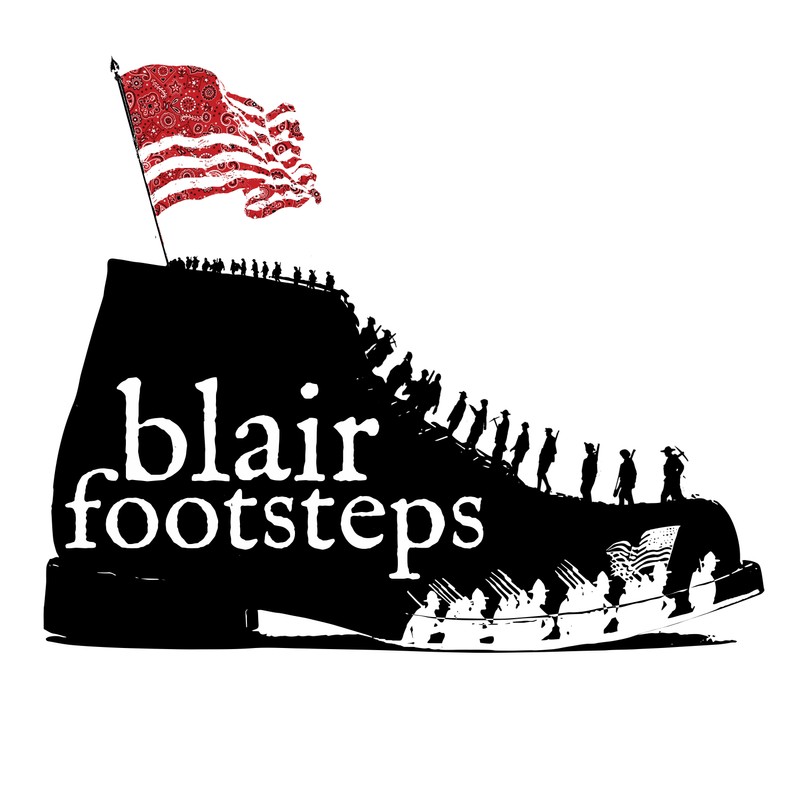
UMWA District 17 Secretary Fred Mooney and President Frank Keeney
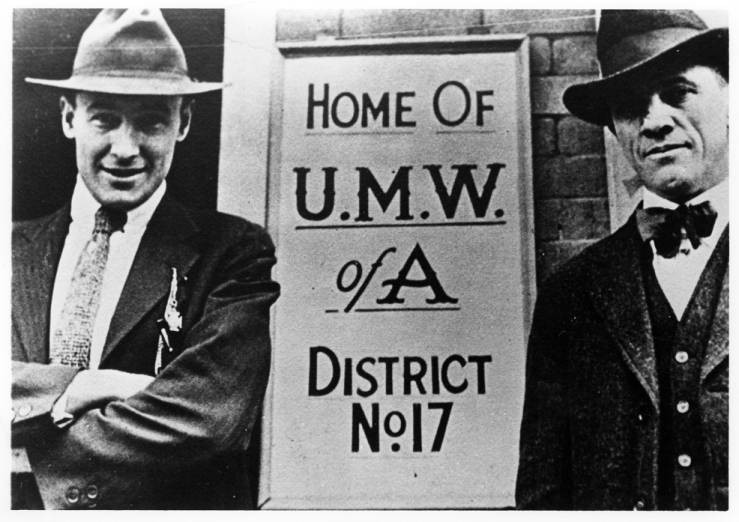
Mary Harris "Mother" Jones tried to use her clout with the miners gathering on Lens Creek to call call off the march on Mingo and prevent a bloodbath. She bluffed when she claimed to have President Harding's word in a telegram that he would address the grievances of the miners gathering on Lens Creek. The maneuver was transparent and strengthened the resolve of the miners to march on Mingo.
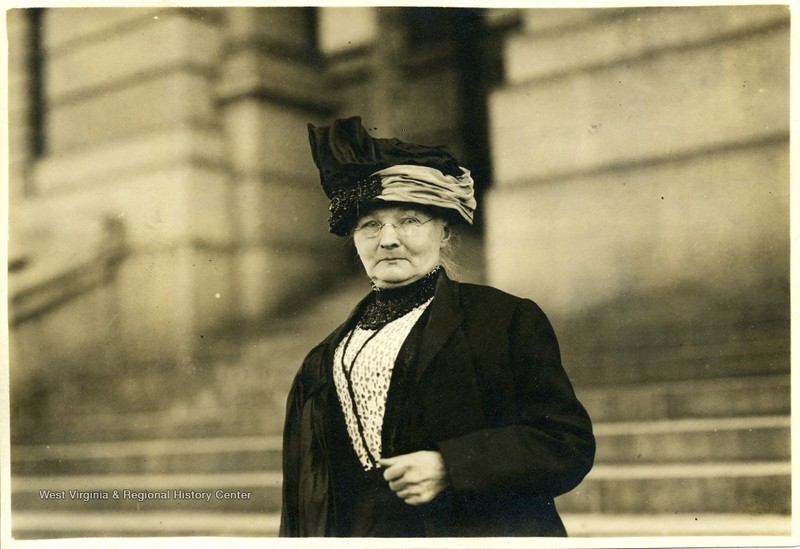
Mother Jones on the move in an undated photograph. A similar sight may have confronted miners near Marmet after the debacle of Mother Jones's fake telegram.
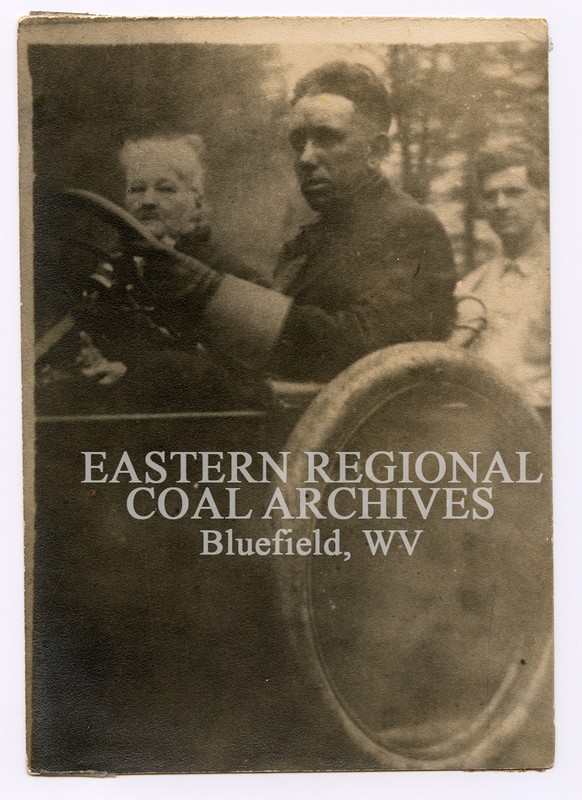
Heavily armed Baldwin-Felts agents on patrol during the 1912-1913 Paint Creek strike.
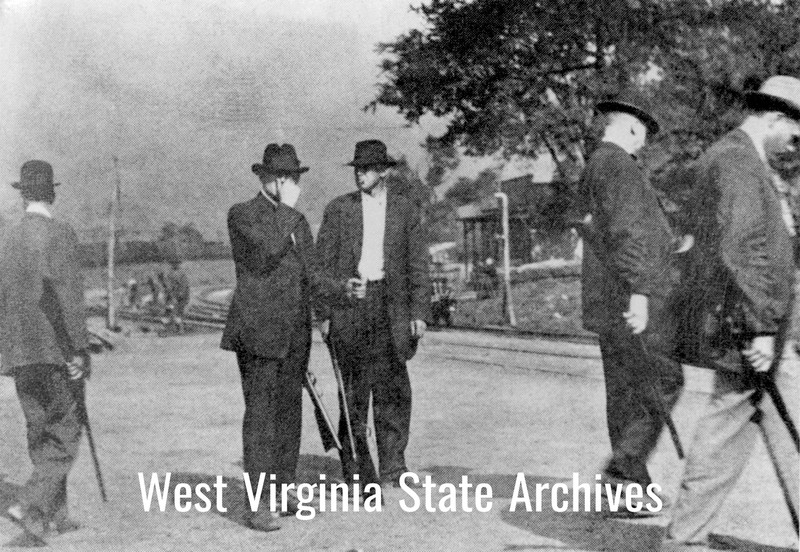
Thomas Felts, head of the infamous Baldwin-Felts Detective Agency
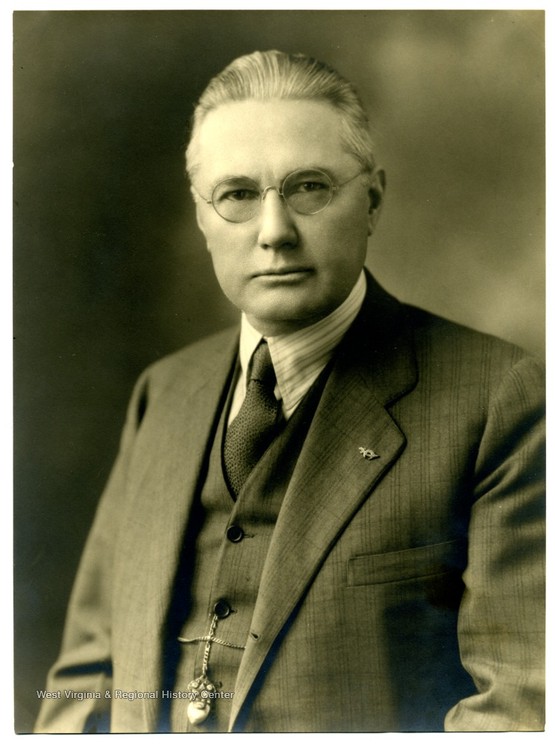
Backstory and Context
Text-to-speech Audio
Background
West Virginia coal miners began gathering along the banks of Lens Creek near the town of Marmet late in the Summer of 1921, but the region had been a powder keg of labor unrest for some time.
The United Mine Workers of America (UMWA) had been fighting to unionize the coalfields south of Boone County for nearly two decades. Miners had been fighting to improve conditions and pay, and coal operators fought bitterly to prevent any such gains by organized labor—citing the need to compete with coal from Pennsylvania, Kentucky, Indiana, Ohio, and other states which could be shipped to market more cheaply than from the remote, mountainous seams of southern West Virginia. In 1917 the UMWA was dealt a serious blow when the U.S. Supreme Court ruled in favor of “yellow dog” contracts. These restrictive employment covenants allowed coal operators to forbid their miners from joining unions, and the operators correspondingly escalated efforts to fire, evict, and Blacklist unionized miners who violated the clauses of those contracts.
Rank-and-file miners had few legal means of resistance upon which they could rely. Living under the watchful gaze of armed mercenaries—usually hired gunmen from the Bluefield, West Virginia-based Baldwin-Felts Detective Agency, which specialized in union-busting—the miners resided in company houses from which they could be evicted at the company's pleasure, were paid in company scrip only redeemable at expensive company stores, and were strictly forbidden from engaging in any activities that might allow them to more effectively address these feudal conditions. Since coal companies often enjoyed a cozy relationship with local government and law enforcement, striking miners and union activists were frequently attacked and jailed by local sheriff's deputies and even West Virginia State Police.
In September 1919, during an attempt to push their unionization efforts south from Kanawha and Boone counties, miners gathered in Marmet to march on Logan County and break the power of anti-union Sheriff Don Chafin, who was notorious for his violent methods of suppressing any threat to his stranglehold on the "Kingdom of Logan". The march ultimately disbanded but the plan was to be revisited in the summer of 1921.
Tensions flared again in May 1920 when agents of the Baldwin-Felts Detective Agency traveled to the small town of Matewan, in Mingo County, to evict striking miners on behalf of the Stone Mountain Coal Company. Matewan Mayor Cabell Testerman and Police Chief Sid Hatfield arrived to halt the evictions. Albert Felts, leader of the detectives and brother of Baldwin-Felts Agency co-owner Thomas Felts, insisted that a judge in Williamson had authorized the evictions but could not produce the writ. Testerman and Hatfield eventually learned that the evictions were illegal, and decided the agents should be arrested.
It wasn't the first time Felts had been arrested for illegally processing evictions, but it would be the last. Hatfield and Testerman confronted the men. Gunfire erupted, and when it fell silent Mayor Testerman, six Baldwin-Felts agents—including Felts brothers Albert and Lee—and two miners lay dead, in what became known as "The Battle of Matewan" or "The Matewan Massacre."
Conflict and violence in southern West Virginia coalfields only escalated after the Battle of Matewan. Sid Hatfield's defiance of the Baldwin-Felts Agency allowed the UMWA made inroads up and down the Tug River Valley, while mine owners bitterly resisted by continuing to fire, evict, and batter miners suspected of union activity. Frank Keeney, president of UMWA District 17 (which included all of the coal-producing counties of West Virginia) called for a general strike in Mingo on July 1, 1920, and thousands of miners laid down their picks and shovels. Imported strikebreakers were often turned away by local deputies who favored the union cause for a change/ The strikebreakers, usually called "scabs," who did make it through often faced threats, intimidation, and in some cases violence from union men.
Coal operators appealed to Governor John J. Cornwell to use the newly-formed West Virginia State Police to break the strike, but superintendent Jackson Arnold refused to brand the newly minted State Police as mine guards. Cornwell instead sought help from the federal government, and federal troops arrived a week later to occupy the Tug River Valley.
Through an intense three-day period during the Spring of 1921, bullets from the guns of striking miners rained down on the mines of the Tug Valley. Strikebreaking miners, mine guards, and police returned fire. Upon learning of the "Battle of the Tug," newly elected Governor Ephraim Morgan declared martial law in Mingo County in mid-May 1921. Morgan appointed Major Thomas B. Davis, Adjutant General of West Virginia, to administer the declaration. Davis proved enthusiastic to a fault in enforcing the terms of Morgan's decree, instituting bans on firearms, meetings and assemblies—but only for pro-union citizens. He went so far as to prohibit union-friendly newspapers from circulating. He soon earned the moniker, "Emperor of the Tug." Davis's occupying force of ad hoc militia also commenced with their offensive against the union, raiding UMWA headquarters in Williamson on May 21 and attacking a strikers' tent colony on Lick Creek on June 5. Twelve were arrested in the Williamson raid, and one miner was killed and 56 imprisoned during the action at Lick Creek.
On August 1, 1921, Sid Hatfield, acquitted by the jury alongside fifteen others for his role in the gunfight at Matewan, arrived at the McDowell County Courthouse to respond to charges stemming from another incident. As Hatfield and co-defendant Ed Chambers climbed the courthouse stairs—unarmed and accompanied by their wives—Baldwin-Felts agents opened fire. Hatfield was killed immediately and Chambers was executed after surviving the initial barrage.
The attack was blood vengeance by Thomas Felts, who had nursed a hatred for Hatfield's killing of his two brothers. More importantly, however, it sent a message loud and clear to union sympathizers across southern West Virginia: those who resisted the authority of the Baldwin-Felts Agency would be punished. Miners grieved as news spread, and the event was a stark and bloody reminder amongst rank-and-file miners that only through armed and organized resistance could justice be won in the southern coalfields.
August, 1921
Thus was the plan for a miners’ march on Mingo reborn. UMWA District 17 leaders Frank Keeney and Fred Mooney rallied 500 miners at the state capitol on August 7 to demand redress to their grievances. Governor Morgan declined to take any action in response. Within days, 600 miners were gathered outside of Marmet and along the banks of Lens Creek. Within weeks that number swelled to as many as 10,000. Some veterans were clad in military uniforms, but most wore denim overalls and red kerchiefs. The "Red Neck Army" was mustering, and planned to march south liberate dozens of their fellows still imprisoned in Williamson.
But to the south was a major obstacle: Sheriff Don Chafin still held sway in Logan County, squarely in the path of the miners' advance. The Sheriff had already begun building his own army to stop the Red Necks, and confidently declared that, "No armed mob will cross Logan County." The battle lines were drawn.
On August 24, Mary Harris “Mother” Jones addressed the gathered miners, urging them to scuttle the march on Logan. In her hands, she claimed, was a telegram from President Warren Harding promising that his administration would end the hated practice of hiring armed mine guards in West Virginia. Jones, however, had no such assurance from President Harding, and Fred Mooney and Frank Keeney suspected as much. When asked by the two UMWA leaders if they could see the telegram, Jones replied “Go to Hell. It’s none of your business.” Keeney and Mooney scurried back to UMWA offices in Charleston to investigate, and quickly confirmed their suspicions when Harding’s secretary reported that the President was out of the city and had sent no such telegram.
Jones was likely influenced by Governor Morgan to believe that the march would inevitably end in slaughter, dealing a fatal blow to unionization efforts in West Virginia. Attempting to dissuade the miners from their march with sleight of hand, however, proved to be a costly blunder. The maneuver vanquished Mother Jones’ credibility with the UMWA, and steeled the Redneck Army's resolve to march. Miners began moving up Lens Creek toward Mingo that evening.
-----
In late August and early September 2021, a small team of volunteers from the Preservation Alliance of West Virginia will install Blair Footsteps, a temporary outdoor exhibit trail which guides visitors through some of the important sites and events along the route of the miners’ march. The exhibit is funded in part by a grant from the National Coal Heritage Area Authority, and is an official event of the Battle of Blair Mountain Centennial.
Sources
Green, James. The Devil Is Here in These Hills. Edition First. New York, New York. Atlantic Monthly Press, 2015.
Lee, Howard B.. Bloodletting in Appalachia: The Story of West Virginia's Four Major Mine Wars And Other Thrilling Incidents On Its Coal Fields. Parsons, West Virginia. McClain Printing Company, 1969.
Savage, Lon. Thunder in the Mountains: The West Virginia Mine War, 1920-1921. Pittsburgh, Pennsylvania . University of Pittsburgh Press, 1990.
Shogan, Robert. The Battle of Blair Mountain: The Story of America's Largest Labor Uprising. Boulder, Colorado. Westview Press, 2004.
Georgia State University Library, M.H. Ross Papers
West Virginia University West Virginia and Regional History Center
Eastern Regional Coal Archives, Donald Wren Collection
West Virginia State Archives
https://wvhistoryonview.org/catalog/032535
